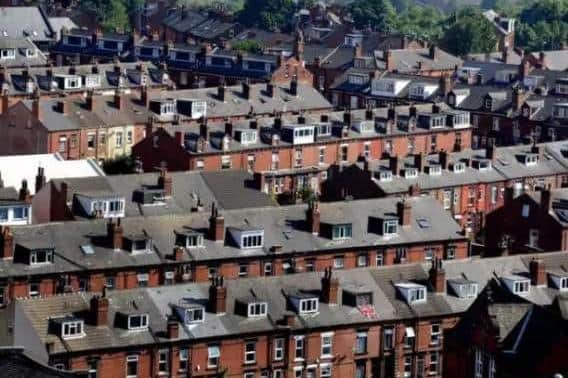Social housing must be a priority if the Government is serious about levelling up - Guy Horne
Our appetite for becoming a property-owning democracy would appear to be undimmed.
For those in the position to own a property, this is great news. But for those who are not, those priced out of the market and forced to rent from private landlords, or made homeless, it is evidence of just how broken our housing market has become.
Advertisement
Hide AdAdvertisement
Hide AdDecades of under investment in high-quality social housing have created a market in which millions of children and families are now suffering. A recent report by the National Housing Federation (NHF) found that two million children are being forced to live in overcrowded, unaffordable or unsuitable homes that are typically rented from unregulated private landlords.


Reports in The Times claim that, in Yorkshire and the Humber, more than a third of privately rented homes are classed as “non-decent”, compared to just 17 per cent in the South East.
So, the recent announcement as part of its levelling up agenda, that Government will legislate to oblige private landlords to provide decent homes is certainly welcome. It is recognition that poor-quality housing is a major cause of inequality and long-term health problems – particularly among children. And, that poor-quality housing can also be a cause of serious psychological issues.
But the announcement does nothing to address the underlying problems in the supply of housing, something that needs to be addressed urgently. Of the 2m children identified by the NHF as being in need of better housing, 1.3m would best be served by social housing as the only suitable and affordable type of home for their families. But, in the 12 years between 1998 and 2010 not a single house was built by local authorities in Yorkshire and the Humber.
Advertisement
Hide AdAdvertisement
Hide AdAt its peak in 1979, almost one third of England’s housing stock was made up of social housing.
Today it is around 17 per cent, equating to a loss of about 1.5 million social homes. There are currently over one million people on housing waiting lists.
This decline in social housing at a time when house prices have risen to levels which are simply unaffordable to many, has left vulnerable families with no choice but to find private rented accommodation.
But, demand for rental properties is booming, too. So, the market simply doesn’t work in the best interests of those renting. Instability, poor conditions and the threat of eviction to temporary accommodation are ever-present.
Advertisement
Hide AdAdvertisement
Hide AdLast year, more than 95,000 families were placed in temporary accommodation while Government figures show that there are 124,000 effectively homeless children, living in temporary accommodation, a number which has almost doubled in a decade.
Poor quality or unstable housing has been attributed as cause or contributor towards many preventable accidents and diseases, including respiratory conditions like allergies and asthma, nervous system and cardiovascular disease.
Children who have experienced homelessness are three to four times more likely to have mental health problems than other children, even a year after being rehoused.
As a result, children living in overcrowded or temporary housing are more likely to be bullied at school, not to see friends and suffer lasting effects on their ability to form relationships.
Advertisement
Hide AdAdvertisement
Hide AdThis is most readily seen in schools where more than three-quarters of teachers in England say they have seen children at school who were homeless or living in poor conditions, a figure that rises to almost 90 per cent in schools where more than a third of children receive free school meals.
The results are unsurprising: increased absenteeism, lateness and lower educational attainment, children arriving at school without having eaten or wearing unclean clothes because there are no laundry facilities at home.
Good quality social housing is an investment in communities.
The Government has long talked of targets for building new homes. But, the ambition to deliver 300,000 homes a year contains no targets for housing type or tenure.
Advertisement
Hide AdAdvertisement
Hide AdThe link between poor housing and the health and life chances of families and children is clear. If we continue to fail to invest, it is possible that we will permanently harm the chances of a generation of young people.
If the Government is serious about levelling up, then social housing must be at the heart of policymaking.
Guy Horne is co-founder and CEO of HSPG, a social impact real estate firm.